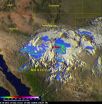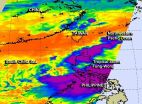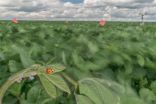(Press-News.org) (Lebanon, NH 9/18/14)— A leading Dartmouth researcher, working with The Melanoma Genetics Consortium, GenoMEL, an international research consortium, co-authored a paper published today in the Journal of the National Cancer Institute that proves longer telomeres increase the risk of melanoma.
"For the first time, we have established that the genes controlling the length of these telomeres play a part in the risk of developing melanoma," said lead author of the study Mark Iles, PhD, School of Medicine at the University of Leeds (UK).
Telomeres are a part of the genome that function like the plastic caps of your shoelaces, which prevent the laces from fraying. Instead they protect the ends of chromosomes from environmental damage, such as exposure to smoke or sunlight, which can harm them.
"Telomere length plays a key role in survival of cells and shorter telomere lengths are associated with aging and cardiovascular disease along with many cancers," said Christopher Amos, PhD, co-author and associate cancer center director for population sciences and interim deputy director at the Dartmouth-Hitchcock Norris Cotton Cancer Center, Lebanon, NH.
The GenoMEL study, conducted at the University of Leeds, looked at 11,108 melanoma cases and 13,933 control cases from Europe, Israel, United States, and Australia. It is the largest study to date to trace the genetic basis of telomere length in melanoma. It evaluated seven known or suspected genetic variations (also called SNPS) in a genome wide associate study (GWAS). It showed a strong association between telomere length and increased risk of melanoma.
"More research is needed to better understand the relationship between melanoma and telomeres, but learning more about how an individual's genetic telomere profile influences their risk developing melanoma may help us. It will improve our understanding of melanoma biology and gives us a target towards developing potential treatments as well as potentially helping shape advice on what behavioral changes people might make," said Iles.
The research team created a score representing genetically-determined telomere length, based on all the established telomere associated genes and found that this score was associated with melanoma risk. The one in four people predicted to have the longest telomeres are at 30 percent increased risk of developing melanoma compared to those one in four predicted to have the shortest telomeres.
The explanation for why a longer telomere is connected to melanoma is not yet known. Researchers propose that having a longer telomere may delay a cellular aging process, which increases the likelihood cellular variation.
"This research is important because it suggests that abnormal cell life span could play a key role in the development of melanomas and that agents targeting cell proliferation could be valuable for reducing melanoma growth," said Amos.
INFORMATION:
GenoMel is funded by Cancer Research UK, which also funded this specific study along with many other international groups. United States funded was provided by NIH grants P50CA093459 and P30CA023108.
About Norris Cotton Cancer Center at Dartmouth-Hitchcock
Norris Cotton Cancer Center combines advanced cancer research at Dartmouth and the Geisel School of Medicine with patient-centered cancer care provided at Dartmouth-Hitchcock Medical Center, at Dartmouth-Hitchcock regional locations in Manchester, Nashua, and Keene, NH, and St. Johnsbury, VT, and at 12 partner hospitals throughout New Hampshire and Vermont. It is one of 41 centers nationwide to earn the National Cancer Institute's "Comprehensive Cancer Center" designation. Learn more about Norris Cotton Cancer Center research, programs, and clinical trials online at cancer.dartmouth.edu.
Melanoma risk found to have genetic determinant
Answer found in protective cap of chromosomes
2014-09-19
ELSE PRESS RELEASES FROM THIS DATE:
UChicago-Argonne National Lab team improves solar-cell efficiency
2014-09-19
New light has been shed on solar power generation using devices made with polymers, thanks to a collaboration between scientists in the University of Chicago's chemistry department, the Institute for Molecular Engineering, and Argonne National Laboratory.
Researchers identified a new polymer — a type of large molecule that forms plastics and other familiar materials — which improved the efficiency of solar cells. The group also determined the method by which the polymer improved the cells' efficiency. The polymer allowed electrical charges to move more easily throughout ...
Research predicts possible 6,800 new Ebola cases this month
2014-09-19
Tempe, Ariz. (Sept. 19, 2014) - New research published today in the online journal PLoS Outbreaks predicts new Ebola cases could reach 6,800 in West Africa by the end of the month if new control measures are not enacted.
Arizona State University and Harvard University researchers also discovered through modelling analysis that the rate of rise in cases significantly increased in August in Liberia and Guinea, around the time that a mass quarantine was put in place, indicating that the mass quarantine efforts may have made the outbreak worse than it would have been otherwise. ...
Domestic violence likely more frequent for same-sex couples
2014-09-19
CHICAGO --- Domestic violence occurs at least as frequently, and likely even more so, between same-sex couples compared to opposite-sex couples, according to a review of literature by Northwestern Medicine scientists.
Previous studies, when analyzed together, indicate that domestic violence affects 25 percent to 75 percent of lesbian, gay and bisexual individuals. However, a lack of representative data and underreporting of abuse paints an incomplete picture of the true landscape, suggesting even higher rates. An estimated one in four heterosexual women experience domestic ...
A better way to track emerging cell therapies using MRIs
2014-09-19
Cellular therapeutics – using intact cells to treat and cure disease – is a hugely promising new approach in medicine but it is hindered by the inability of doctors and scientists to effectively track the movements, destination and persistence of these cells in patients without resorting to invasive procedures, like tissue sampling.
In a paper published September 17 in the online journal Magnetic Resonance in Medicine, researchers at the University of California, San Diego School of Medicine, University of Pittsburgh and elsewhere describe the first human tests of using ...
NASA catches a weaker Edouard, headed toward Azores
2014-09-19
NASA's Aqua satellite passed over the Atlantic Ocean and captured a picture of Tropical Storm Edouard as it continues to weaken. The National Hurricane Center expects Edouard to affect the western Azores over the next two days.
NASA's Aqua satellite flew over Tropical Storm Edouard on Sept. 18 at 1:45 p.m. EDT and the Moderate Resolution Imaging Spectroradiometer (MODIS) instrument took a visible picture that showed the eye had disappeared and the bulk of clouds pushed east of center.
At 5 a.m. EDT on Sept. 19, Edouard's maximum sustained winds had decreased to near ...
NASA, NOAA satellites show Odile's remnant romp through southern US
2014-09-19
Former Hurricane Odile may be a bad memory for Baja California, but the remnants have moved over New Mexico and Texas where they are expected to bring rainfall there. NASA's TRMM satellite measured Odile's heavy rainfall rates on Sept. 18, and NOAA's GOES-West satellite saw the clouds associated with the former storm continue to linger over the U.S. Southwest on Sept. 19.
The remnants of Hurricane Odile were dropping heavy rain in the area from southern Arizona to western Texas when NASA-JAXA's Tropical Rainfall Measuring Mission or TRMM satellite flew over on September ...
NASA sees Tropical Storm playing polo with western Mexico
2014-09-19
Tropical Storm Polo is riding along the coast of western Mexico like horses in the game of his namesake. NASA's Aqua satellite saw Polo about 300 miles south-southeast of Baja California on its track north.
NASA's Aqua satellite flew over Polo on Sept. 18 at 4:35 p.m. EDT and the Moderate Resolution Imaging Spectroradiometer captured a visible image of the storm that showed that much of the clouds, thunderstorms and showers were west and south of the center of circulation, and away from the coast. That's an indication that easterly wind shear had increased and were pushing ...
NASA eyes Tropical Storm Fung-Wong move through Northwestern Pacific
2014-09-19
Tropical Storm Fung-Wong continued to affect the Philippines while moving north through the Northwestern Pacific Ocean. NASA's Aqua satellite provided infrared data on the storm's clouds that showed some high, strong thunderstorms with the potential for heavy rainfall over the northern and central regions of the country. The storm is now expected to affect three more countries over the next several days.
The AIRS instrument aboard NASA's Aqua satellite uses infrared light to read cloud top temperatures in tropical cyclones. When Aqua passed over Fung-Wong infrared data ...
Dwindling wind may tip predator-prey balance
2014-09-19
MADISON, Wis. — Bent and tossed by the wind, a field of soybean plants presents a challenge for an Asian lady beetle on the hunt for aphids. But what if the air — and the soybeans — were still?
Rising temperatures and shifting precipitation patterns may get the lion's share of our climate change attention, but predators may want to give some thought to wind, according to a University of Wisconsin Madison zoologist's study, which is among the first to demonstrate the way "global stilling" may alter predator-prey relationships.
"There are all sorts of other things that ...
A two generation lens: Current state policies fail to support families with young children
2014-09-19
September 19, 2014 -- Recent two-generation approaches to reducing poverty that help children and their parents are receiving increasing attention from researchers, advocates, and foundations. By combining education and training for parents to enable them to move to jobs that offer a path out of poverty with high-quality early care and education for children, these programs aim to improve the life opportunities of both. However, according to a new report from the National Center for Children in Poverty (NCCP), State Policies through a Two-Generation Lens, while research ...
LAST 30 PRESS RELEASES:
How the Birmingham Drug Discovery Hub created an investment-ready ‘drug library’
Scientists uncover 95 regions of the genome linked to PTSD
AI tool predicts responses to cancer therapy using information from each cell of the tumor
CEOs’ human concern translates into higher stock price
Smoking-related deaths could be reduced if people attending lung cancer screening are offered stop-smoking support
Quick decisions in soccer enhanced by brain’s ability to suppress actions
Recycling CFRP waste is a challenge, but we've found a way to make it work
Advanced nuclear magnetic resonance technique developed to reveal precise structural and dynamical details in zeolites
Advancing performance assessment of a spectral beam splitting hybrid PV/T system with water-based SiO2 nanofluid
Researchers realize target protein stability analysis by time-resolved ultraviolet photodissociation mass spectrometry
Oxygen vacancies mediated ultrathin Bi4O5Br2 nanosheets as efficient piezocatalyst for synthesis of H2O2 from pure water
Warming and exogenous organic matter input affected temperature sensitivity and microbial carbon use efficiency of agricultural soil respiration on the Qinghai-Tibet Plateau
Eco-friendly glue designed by Cal Poly, Geisys Ventures team earns industry 'Innovation Award'
From dreams to reality: unveiling the ideal in situ construction method for lunar habitats and paving the way to Moon colonization
From theory to practice: Study demonstrates high CO2 storage efficiency in shale reservoirs using fracturing technology
What women want: Female experiences to manage pelvic pain
Study finds ChatGPT shows promise as medication management tool, could help improve geriatric health care
Heart failure, not stroke is the most common complication of atrial fibrillation
Antipsychotics for dementia linked to more harms than previously acknowledged
Health improvements occurred worldwide since 2010 despite COVID-19 pandemic, but progress was uneven
Mind the gender gap – Met police least trusted by women
Surrey engineers help Mauritius spot illegal fishing from space
Opioid dependence remains high but stable in Scotland, new surveillance report finds
Protecting brain cells with cannabinol
Calorie restriction study reveals complexities in how diet impacts aging
Atom-by-atom: Imaging structural transformations in 2D materials
How 3D printers can give robots a soft touch
Rice alumna wins prestigious merit-based fellowship for new Americans
International group runs simulations capable of describing South America's climate with unprecedented accuracy
Researchers find that accelerated aging biology in the placenta contributes to a rare form of pregnancy-related heart failure
[Press-News.org] Melanoma risk found to have genetic determinantAnswer found in protective cap of chromosomes





